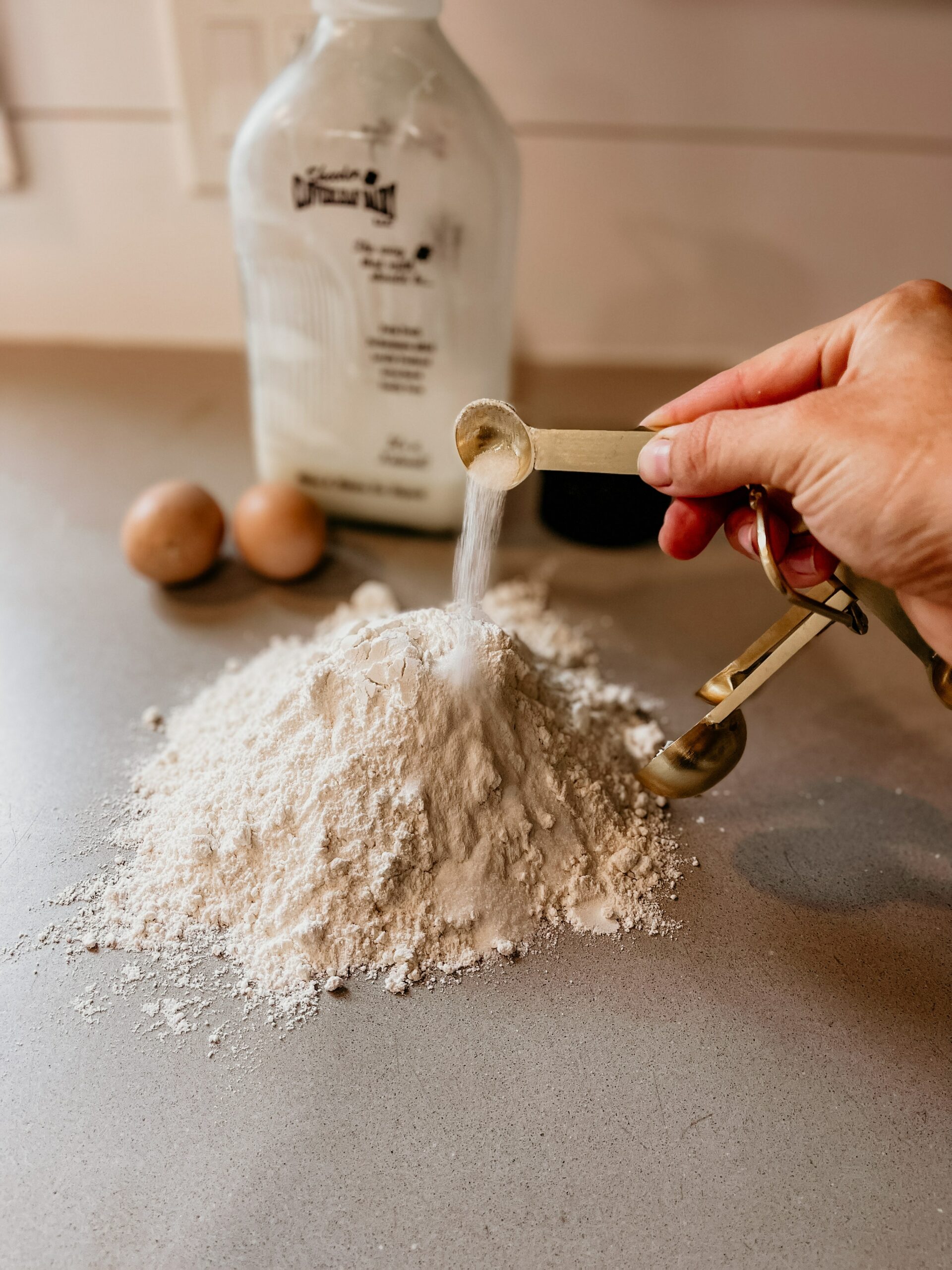What is half of 3/4 of a cup you ask?
Have you ever been in the middle of baking a new recipe and needed to figure out what is half of 3/4 cup?
Some conversions are simple and can be done in your head while others are a bit more tricky.
What Is the Main Difference When Converting Dry Ingredients to Their Wet Counterparts?
When compared to the difficulty of measuring and converting dry ingredients, it is much simpler to measure and convert wet ingredients. This is due to the fact that measurements taken in dry conditions are inherently inaccurate.
1. Dry ingredients such as flour, brown sugar, and cocoa powder are easily compressible. This means that the volume of these ingredients can change depending on factors such as how compact they are inside the measuring cup or even the humidity in the surrounding area.
2. The volume that must be measured for liquid ingredients remains constant no matter what. If you fill a measuring cup with flour, for instance, the degree to which you pack it in will dictate the volume of flour you actually have in the cup. whereas 10 ounces of water will always be equal to 10 ounces of water regardless of the temperature.

It is recommended that you measure dry ingredients using dry measuring cups, and measure wet ingredients using liquid measuring cups, in order to ensure that your conversions are as accurate as they can possibly be. This enables you to make a dry measurement more precise by allowing you to level off the top of a measuring cup using a straight edge.
Let’s find out what is half of 3/4 cup, along with other difficult measurements….
A lot of the measurements in recipes are simple to break down and divide, particularly when you’re just cutting the recipe in half.
For instance:
Half of 1 cup is 1/2 cup
Half of 1/2 cup is 1/4 cup
Half of 2/3 cups = 1/3 cup
 Some measurements like what is half of 3/4 cup, are more difficult. One method of calculation is to break all measurements down into teaspoons and tablespoons, then, dividing measurements becomes a little bit easier.
Some measurements like what is half of 3/4 cup, are more difficult. One method of calculation is to break all measurements down into teaspoons and tablespoons, then, dividing measurements becomes a little bit easier.
This chart will help you convert cups to teaspoons and tablespoons:
1 cup = 16 tablespoons
3/4 cup = 12 tablespoons
1/2 cup = 8 tablespoons
1/3 cup = 5 tablespoons plus 1 teaspoon
1/4 cup = 4 tablespoons
1 tablespoon = 3 teaspoons
Using this method we see that 3/4 of a cup is 12 tablespoons so the answer to what is ¾ of a cup becomes clear …. 6 tablespoons.
A second common method used to scale down a recipe is to weigh the ingredients.
Take out your calculator and kitchen scale because the method that requires the fewest steps to cut a recipe in half is to weigh everything first and then divide it. When you want to cut a recipe in half but it calls for an odd number of eggs, this is especially helpful because it allows you to divide the recipe more precisely.
If you are aware of how much each component weighs, you will be able to divide the ingredients much more precisely and with much less effort.
When it comes to baking, kitchen scales are extremely helpful tools that will give you more consistent success in the kitchen.
In addition to that, their prices are reasonable. The following table provides the weight, in grams, of some common ingredients.
1 cup all-purpose flour = 125 grams
1 cup brown sugar = 220 grams
1 cup granulated sugar = 200 grams
1 cup powdered sugar = 115 grams
1 cup unsweetened cocoa powder = 90 grams
1 large egg (without shell) = roughly 50 grams (eggs can vary by a few grams)
Advice for Adjusting the Scales of Recipes
The more practice you get, the easier it is to scale recipes. Bear in mind the following guidelines as you proceed:
1. Reduce the size of your pots and pans. It’s possible that the converted recipe will call for a different type of baking or cooking dish. If you cut a brownie recipe in half but use the same size pan, the resulting brownies will be much flatter and crispier than you were anticipating. This is because the reduced amount of batter will spread out more evenly.
2. Be aware of which components should be converted and which components should not be converted. The vast majority of things will require conversion, but there are a few notable exemptions. Even if you reduce the amount of food in a recipe, certain quantities of ingredients will remain the same. For instance, if a recipe calls for 1 tablespoon of oil to coat the bottom of the saucepan, you will still need that quantity. When it comes to buttering and flouring a baking dish, the same rule applies. You should reduce the amount of certain spices, but you shouldn’t reduce the amount of seasoning too much; otherwise, you’ll end up with a dish that doesn’t have enough flavor.
3. Make sure to taste as you go along with the recipe. If lowering the amount of basil or cayenne pepper in the dish makes it less aromatic or if it lost its kick as a result of the reduction, add more of both. Taste as you go and adjust the seasonings as necessary.
4. Perform any necessary conversions before beginning the cooking process. It is important that you take the time to convert the numbers and write them down so that you do not forget them or the fact that you are using a modified recipe.
What Happens to the Cooking Time and Temperature When You Reduce the Amount of Ingredients in a Recipe?
When you scale the ingredients of a recipe, you do not need to scale the temperature of the oven; however, you may need to scale the amount of time it takes to cook the dish because smaller volumes cook more quickly. The dish should be checked approximately once every five minutes until it is done cooking; a timer should be set to alert you when it has reached the halfway point.
Summing it up … What is half of 3/4 Cup?
I hope this article was helpful and if you have anything to add please leave a comment below.
If you prefer, here is a great online converter.
Take a look at this article to learn how to convert grams to ounces.

